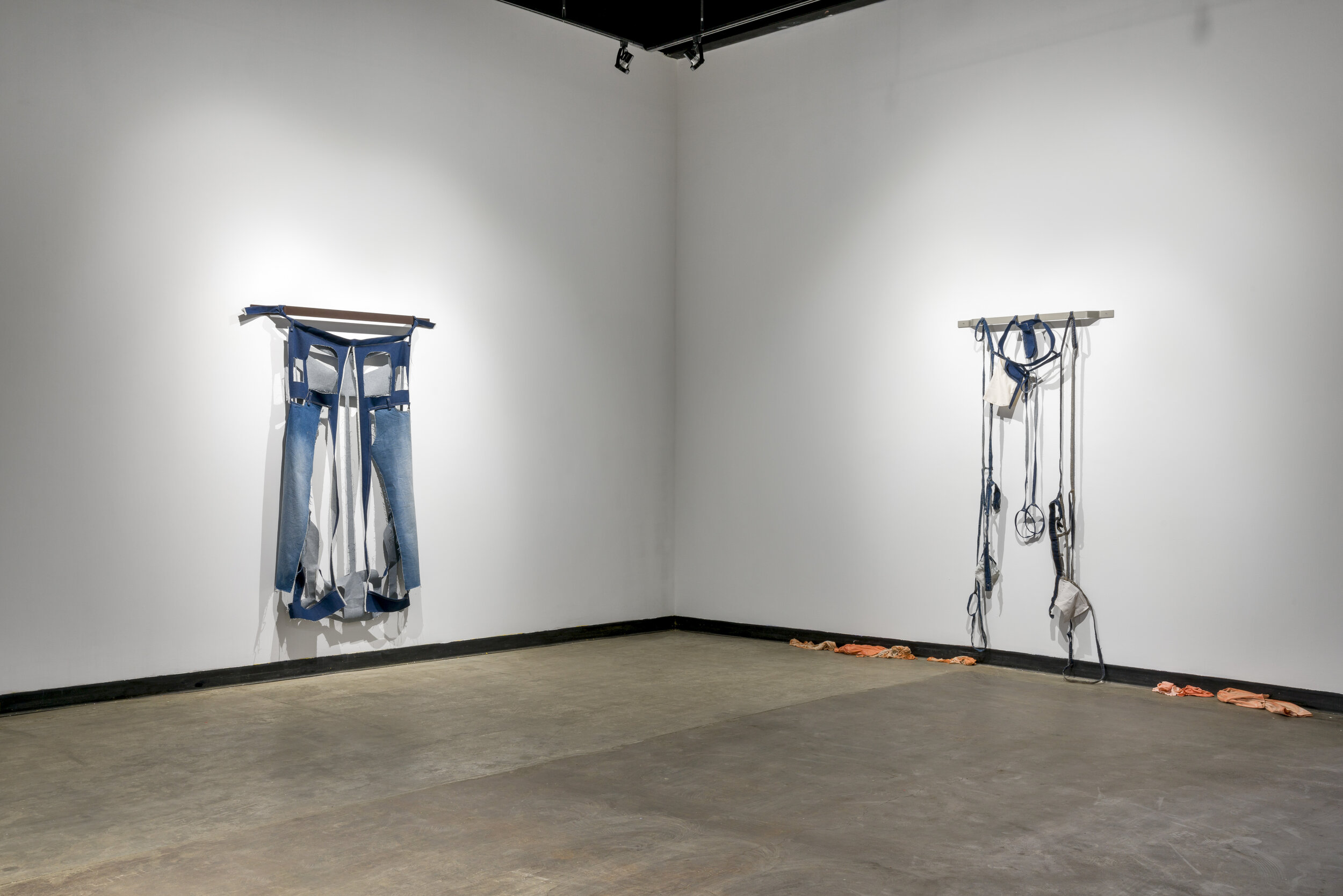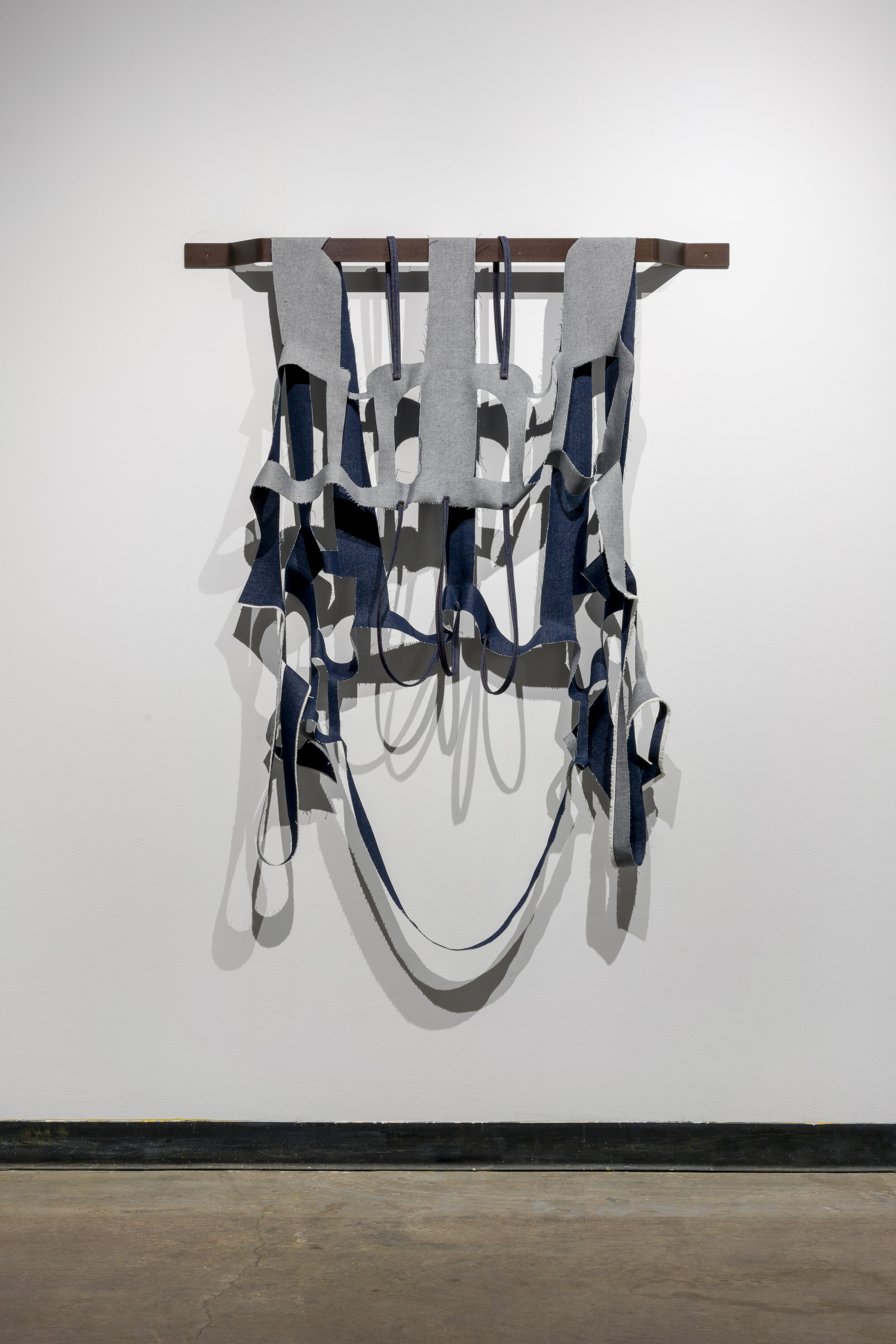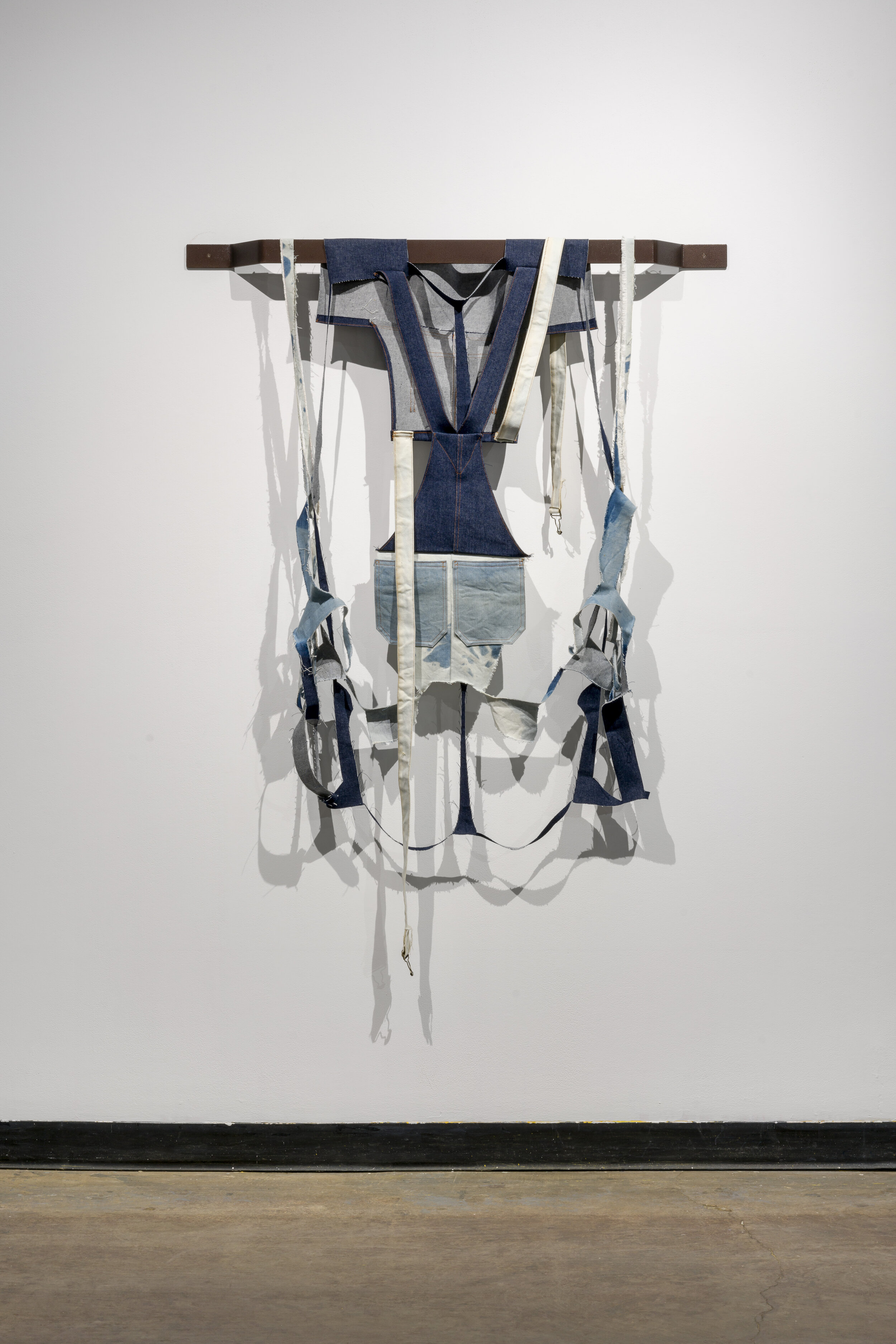The Cutting Room Floor | Jaclyn Bruneau
Photographs by Blaine Campbell
The Great Western Garment Company, which sold their jeans for 66% of what Levi’s costed, opened in 1911 in Edmonton. "They wear longer because they're made stronger," their slogan read, leaving no question that their work was to make figuring out what to wear to work less work. A sturdy pair of pants to pull on with the mindless procedure of a uniform, a second skin. Pants, and other things too, that one could wear until they became soft and thin in important places, at which point they might be worn on weekends, or torn into smaller pieces—rags for the garage, or drop cloths for handheld projects.
After Karen Kraven’s father passed away a few years ago, and after a necessary period of nothing while she began to grieve—“complete stoppage,” as she put it—the artist wondered what might make it possible to begin working again. Setting herself on repetitive, mechanical tasks, taking a lunch break, and then resuming until the light started waning: this was a formula, a way to get herself through the door and in the chair, and as it turned out, a bit of a trick. A self-professed planner with an instinct to figure things out and then execute, she took herself to a logical place, finding that by being there long enough, the hyper-focus of flat-out production would begin swerving into stranger terrain, and with no less acuity.
Where denim appears in Lull is where the results of this strategically self-deceptive, intuitive process can be observed, the material chosen for its resonance with Edmonton’s textile history in a nod to the exhibition’s host city, and with Kraven’s family lineage in Canadian manufacturing—specifically, a knitting factory. Hanging on the wall from metal brackets are five discrete works, created by carefully cutting materials according to patterns for jeans, and working only with the offcuts. Each assemblage initially suggests forms and functions which break down upon closer inspection; one might see overalls in Chlorine (recalling Diego Rivera’s commitment to wearing denim overalls as a gesture of solidarity with the proletariat), a safety harness in Indigo, and an industrial apron in Pumice (the works starkly named after treatments inflicted upon the fabric). It’s pleasurably confusing to muse on their status as clothes in progress or retired attire. Certain areas are familiar and finished—with clasps, pockets, buttonholes, or belt loops—and others are raw, frayed, or outright impervious to the fact that the head and the limbs tend to extend from fairly specific places on the body. If these works suggest the corporeal, it’s of unexplainable, immaterial excesses rather than of flesh and bones. Taken together, they’re like a group of labourers who are barely there, threadbare.
In their explicit constitution of that which has been determined useless in the process of sewing something wearable, these works force to the viewer to consider what is nonsensical, devoid of use value—desperate for affirmation that entities that do not, cannot, or will not perform are worthy of existence. “I have to remind myself so often that I’m not making jeans,” Kraven tells me on the phone with jesting exasperation, suggesting this serenely political project is as much about retraining her own reflexes as it is anything else.
In thinking of these aggregated negatives, I can’t help but think of the disproportionately small margin of hours that one spends not working—scraps of time that are haphazardly strung, tied, or stitched together to call a life. Even the language itself, "not working,” corroborates that that which is not work can only be conceived of in relation to work, sustaining work as the default. This exhausting, existentially troubling truth is epitomized in Lull, too, by comically oversized sewing needles and thread stands, the seemingly ridiculous proportions actually accurately representing the inflated space work takes up in our lives. But the stands are shrouded in pale pink pocketing, like dust covers thrown about a space before an indefinite evacuation, and the elegant arm-length needles are, without question, weapons. This is a materialization of labour not in its enactment, but in its shadow—in its insidious, persistent stuckness to us, our second skin which seemingly cannot be shed.
What does a break from work feel like under such conditions? “Like something else is supposed to be happening, and like this is just between that,” Kraven says. “Or like the kind of silence when you put a pillow over your head… it’s not a peaceful silence.” It’s the guilt of stopping, or the dread of starting again, or both at the same time, despite earnest intentions to compartmentalize in the name of self-preservation: to leave work at the studio, office, or in minimized computer tabs. “I wanted to figure out some way to live as something more than information,” Anne Boyer said of her thinking that led to the book Garments Against Women, a title Kraven alludes to for the author’s use of sewing to oppose the states of both writing (working), and “not writing [which] is working.”
At one point, Kraven describes the way the light fades in her studio in Chabanel, a garment district where centuries of workers have walked, finding themselves in the same disappearing sun each evening. Somewhere in there, I imagine the composite fragments perfectly cut to make pairs of jeans lying in her bin of scraps, and it’s this spurning of pure function that stirs in me something close to relief.
Jaclyn Bruneau is a writer, critic, and the Editor of C Magazine. She has given talks on exhibitions and projects by more than 20 artists, and is currently underway on an inconspicuous yearlong art publishing project in the online classifieds with Natasha Chaykowski and Untitled Art Society called please, teach me to swim.





